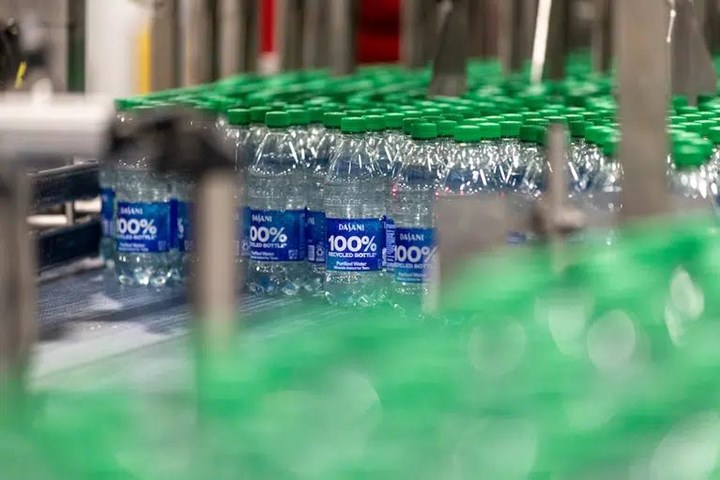Coke Makes Bottle Changes to Boost Recycling
Sprite bottles will be clear, while Dasani bottles will be made with recycled plastic.
The Coca Cola Co. announced changes to its plastic bottles sold in North America. Dasani bottles will be made from 100% recycled PET, and Sprite bottles will transition from green to clear plastic, which is more likely to be recycled into new bottles.

Dasani water bottles will be made with recycled plastics (excluding caps and labels).
Photo: Coca Cola Co.
A majority of Dasani bottles in the U.S. will be offered in 100% recycled plastic beginning this summer. The shift is expected to conserve more than 20 million lb of new plastic, compared to 2019, and cut more than 25,000 m.t. of greenhouse gas emissions in 2023 alone.
A 2021 launch of recycled bottles in California, New York, and Texas, helped the company to identify sources for recycled PET and fine-tune production processes.
Plastic bottles of Sprite will be clear beginning August 1. Although green PET is recyclable, the recycled material is more often converted into single-use items like clothing and carpeting that cannot be recycled into new PET bottles. During the sorting process, green and other colored PET is separated from clear material to avoid discoloring recycled food-grade packaging required to make new PET bottles.
Coca-Cola began transitioning Sprite to clear bottles in 2019, in Western Europe and Southeast Asia.
Coca-Cola North America’s entire green plastic portfolio—including packaging for Fresca, Seagram’s and Mello Yello—will transition to clear PET in the coming months.
Related Content
-
How to Optimize Color Evaluation of Recycled Plastics
The right color measurement instrument and good working methods will minimize variability in color evaluation of PCR.
-
Riverdale Global Showing Latest Innovations and New Satellite Location in Wisconsin
NPE2024: Live demos of updated RGS controller are among the highlights at its Wisconsin facility that will house the ‘new’ color R&D lab.
-
Some (Don’t) Like It Hot: Overcoming Thermochromism Challenges in Plastics Manufacturing
A new means of effectively testing thermochromism’s impact on color in plastics enables accurate measurements without time-consuming cooling.






